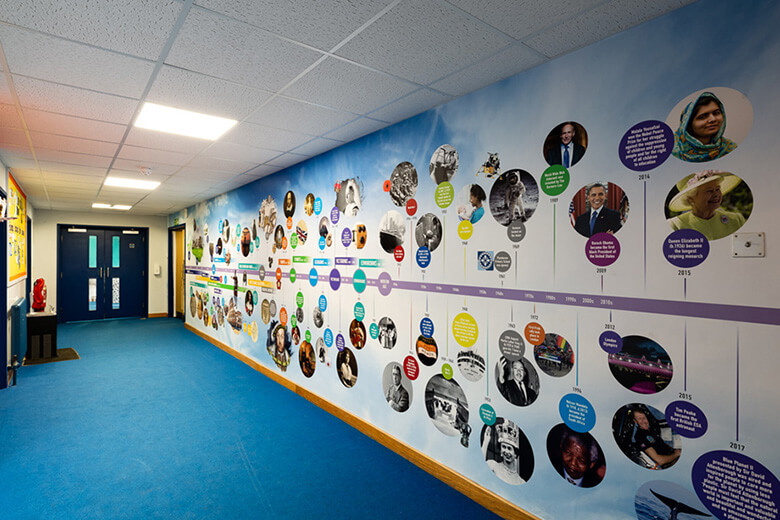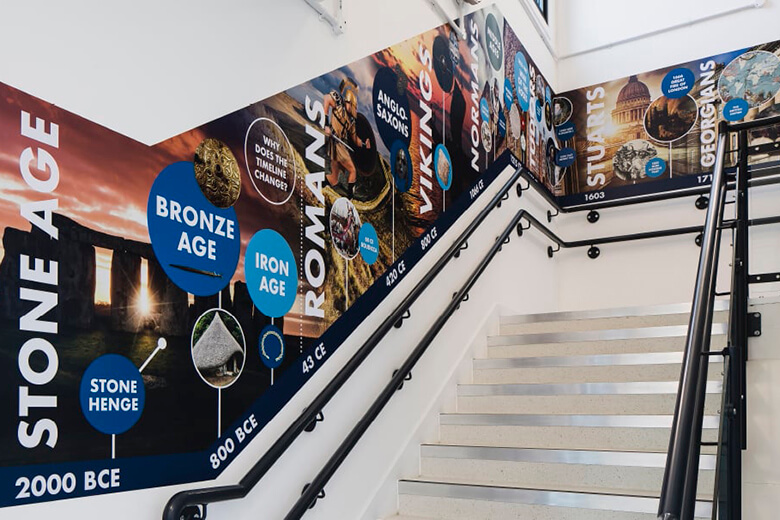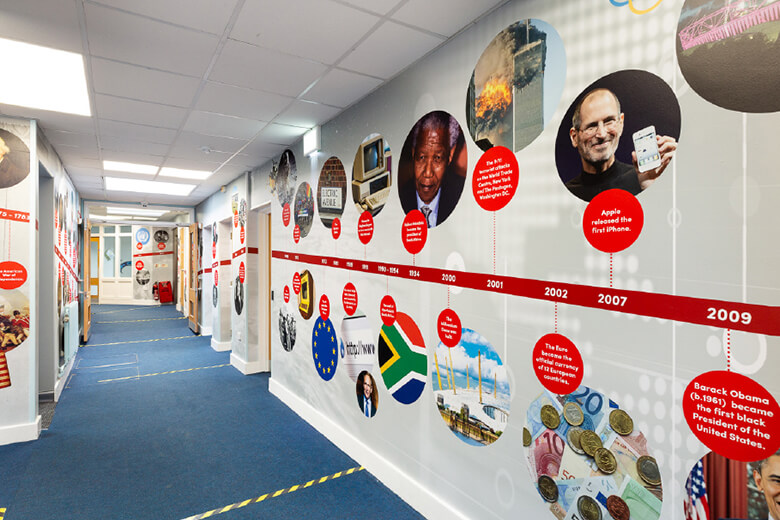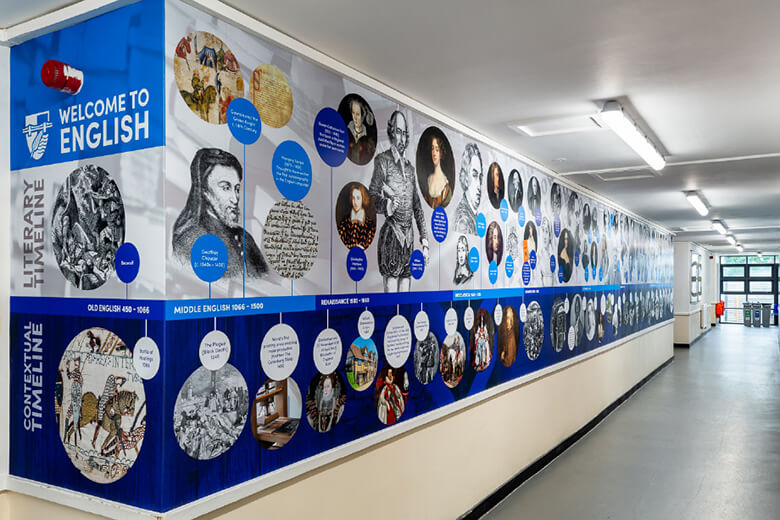Want to promote active learning, explain chronology and fuel curiosity?
Timelines are a visual learning aid for schools. They show pupils what happened, when and why. Timelines also give context to key events, to complement lessons in the classroom.
As a large-format, visual medium, Timelines provide the perfect opportunity for active learning. In fact, they’re a fabulous way to enhance your learning environment.
As other Wall Art trends emerge and evolve, Timelines remain consistently popular for schools. So, let’s wander through time and discuss why they’re so popular…
Through active learning, children can engage in free thought, imagination and self-expression

Active learning
“Active learning is an umbrella term for learning and teaching methods that put the student in charge of their own learning through meaningful activities. It promotes recall and deeper understanding of material, as students are engaging with the content rather than simply listening to it.” – University of Leicester
Through active learning, children can engage in free thought, imagination and self-expression. Pupils can also cultivate their own opinions and ideas about each event.
“Young children learn concepts, form ideas, and create their own symbols or abstractions through self-initiated activity—moving, listening, searching, feeling, manipulating. Such activity, carried on within a social context…makes it possible for the child to be involved in intrinsically interesting experiences that may produce contradictory conclusions and a consequent reorganization of the child’s understanding of his or her world.“- Trinity Preschools
Older children will benefit from engaging with their curriculum in an exciting and visually rich format

Timelines allow pupils to engage, actively and authentically, with events they’ll learn about in the classroom.
They can:
- walk side-by-side with history
- put faces to names
- see events represented visually
For younger children, the content should be simple, fun and colourful. They can use their imaginations and explore infinite realms of possibility.
Older children will benefit from engaging with their curriculum in an exciting and visually rich format. Timelines are certainly ideal for large classes. They provide the physical space for pupils to engage with the content individually, and as a group.
Making the most of Timelines
We’ve received some feedback from schools about how they use their Timelines to best effect. So here are a few tips to maximise yours:
- Make it fun! Quizzes, games and interactive discussion are all fantastic for sparking curiosity
- Access all areas – you can use Timelines across multiple areas of your school, including stairwells, classrooms and halls. Areas of heavy footfall, like Stairwells, are ideal for helping pupils retain knowledge, as they’ll see the Timeline every day as they make their way between classes and lunch breaks
- Pick one, or many, subjects – some schools choose to focus their Timeline on a single subject. For example; History, Literature, or Science. Whilst others incorporate multiple subjects or interests within their timeline

Understanding chronology
Timelines showcase events in order, in a large, visual format. So they’re ideal for teaching chronology and helping pupils piece together multiple events in relation to each other.
They also make it possible for pupils to relate historical events to their current life stages. For example, pupils may see examples of events that have repeated themselves throughout history. Or, they might realise that certain inventions or events didn’t happen as long ago as they expected!
Timelines showcase events in order, in a large, visual format
Curiosity and conversation
Recently, we received this super feedback from Malmesbury Park Primary School:
“What a fantastic timeline
The children are really engaged by it and asking lots of questions.
My favourite quote is ‘How did you survive without the internet?!’
This is a superb example of how Timelines can prompt discussion, fuel curiosity and give context to key events.
And, as pupils actively engage with their Timeline, they’ll naturally discuss aspects of it. By the time they return to the classroom, they’ll be more engaged and enthusiastic. They’ll certainly be ready to discuss and debate what those events mean to them!
Timelines in action
At Promote Your School, we specialise in creating bespoke designs for each project. This means, no two timelines will be alike! We believe your school is unique, so your Wall Art should be too.







